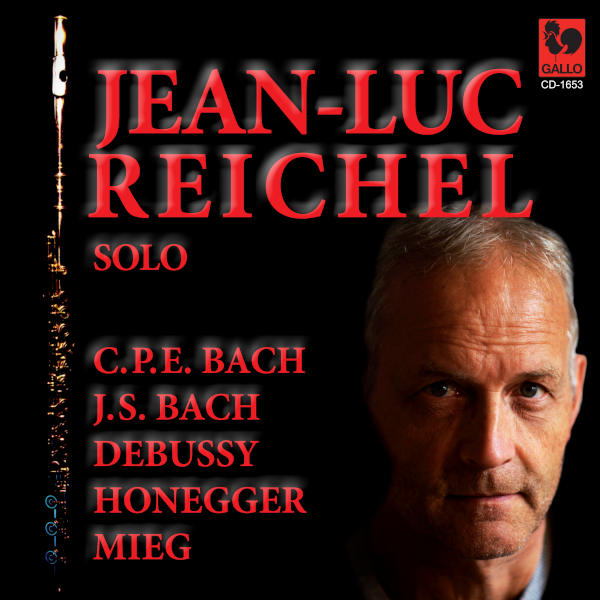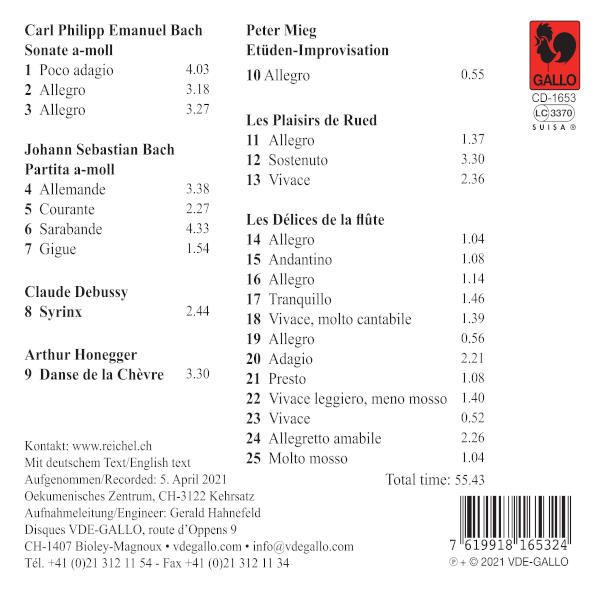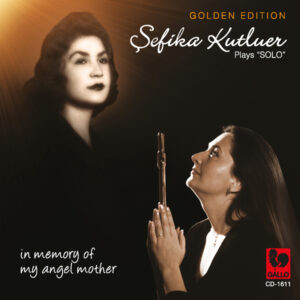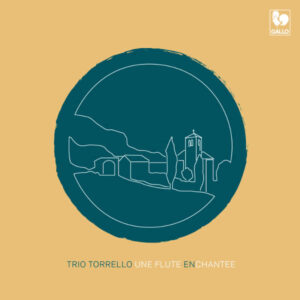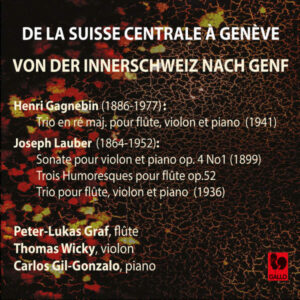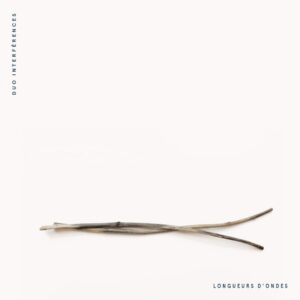Extraits / Excerpts
C.P.E. Bach - J.S. Bach - Debussy - Honegger - Mieg - Jean-Luc Reichel, Flute Solo
Carl Philipp Emanuel BACH: Flute Sonata in A Minor, Wq. 132, H. 562 – Johann Sebastian BACH: Flute Partita in A Minor, BWV 1013 – Claude DEBUSSY: Syrinx, L. 129 – Arthur HONEGGER: Danse de la Chèvre, H. 39 – Peter MIEG: Etüden-Improvisation: Allegro – Les Plaisirs de Rued.
Jean-Luc Reichel, Flute Solo. (https://reichel.ch/)
The current global health crisis has, among many other things, served as a timely reminder of the expressive potency of the solo instrument or voice. Quite apart from the hardship faced by so many individuals in the performing arts, the lone performer has the ability to evoke a solitary figure – a character in a narrative, perhaps, or even the person of the performer or observer/listener themselves.
In the world of musical instruments, it is perhaps the flute that has the most strikingly evocative powers to this end. This non-reed woodwind instrument, with its origins in the simple pipe, can trace its origins back not just to antiquity but to prehistory, with the earliest surviving examples dating back some forty-thousand years. It is probably its subtle mediation of that most essential of human activities – breathing – that endows this edge-blown aerophone with its peculiar potency. While the flute has an impressively ancient pedigree and has been favoured by folk and itinerant musicians for centuries, it was not until the blossoming of instrumental music during the Baroque period that the instrument began to acquire its own distinctive repertoire in western art music. In particular, this period saw the recorder [Blockflöte] (an example of the so-called fipple flute) gradually supplanted by the side-blown transverse flute [Querflöte] as the high-woodwind instrument of choice in chamber music and larger-scale ensemble works (choral and orchestral).
- Categories
- Composers
- Interprets
- Booklet
